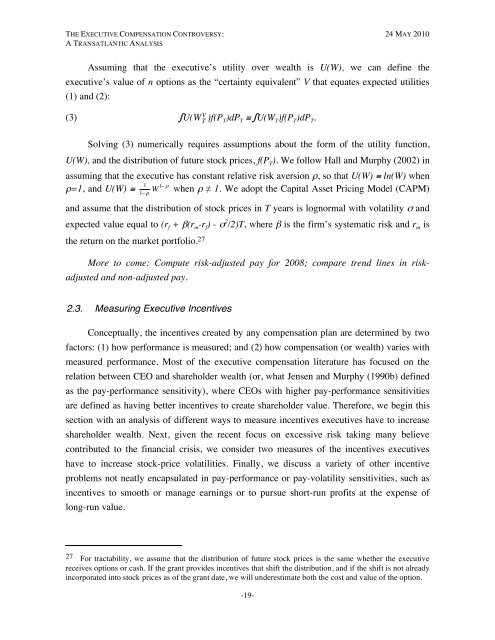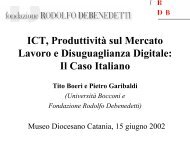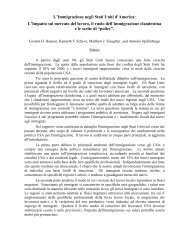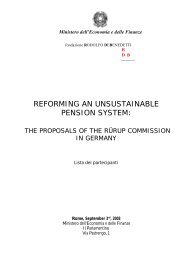The Executive Compensation Controversy - Fondazione Rodolfo ...
The Executive Compensation Controversy - Fondazione Rodolfo ...
The Executive Compensation Controversy - Fondazione Rodolfo ...
Create successful ePaper yourself
Turn your PDF publications into a flip-book with our unique Google optimized e-Paper software.
THE EXECUTIVE COMPENSATION CONTROVERSY: 24 MAY 2010A TRANSATLANTIC ANALYSISAssuming that the executive’s utility over wealth is U(W), we can define theexecutive’s value of n options as the “certainty equivalent” V that equates expected utilities(1) and (2):(3) ∫U(W V T )f(P T )dP T ≡ ∫U(W T )f(P T )dP T .Solving (3) numerically requires assumptions about the form of the utility function,U(W), and the distribution of future stock prices, f(P T ). We follow Hall and Murphy (2002) inassuming that the executive has constant relative risk aversion ρ, so that U(W) ≡ ln(W) when1ρ=1, and U(W) ≡1! " W1! " when ρ ≠ 1. We adopt the Capital Asset Pricing Model (CAPM)and assume that the distribution of stock prices in T years is lognormal with volatility σ andexpected value equal to (r f + β(r m -r f ) - σ 2 /2)T, where β is the firm’s systematic risk and r m isthe return on the market portfolio. 27More to come: Compute risk-adjusted pay for 2008; compare trend lines in riskadjustedand non-adjusted pay.2.3. Measuring <strong>Executive</strong> IncentivesConceptually, the incentives created by any compensation plan are determined by twofactors: (1) how performance is measured; and (2) how compensation (or wealth) varies withmeasured performance. Most of the executive compensation literature has focused on therelation between CEO and shareholder wealth (or, what Jensen and Murphy (1990b) definedas the pay-performance sensitivity), where CEOs with higher pay-performance sensitivitiesare defined as having better incentives to create shareholder value. <strong>The</strong>refore, we begin thissection with an analysis of different ways to measure incentives executives have to increaseshareholder wealth. Next, given the recent focus on excessive risk taking many believecontributed to the financial crisis, we consider two measures of the incentives executiveshave to increase stock-price volatilities. Finally, we discuss a variety of other incentiveproblems not neatly encapsulated in pay-performance or pay-volatility sensitivities, such asincentives to smooth or manage earnings or to pursue short-run profits at the expense oflong-run value.27 For tractability, we assume that the distribution of future stock prices is the same whether the executivereceives options or cash. If the grant provides incentives that shift the distribution, and if the shift is not alreadyincorporated into stock prices as of the grant date, we will underestimate both the cost and value of the option.-19-









